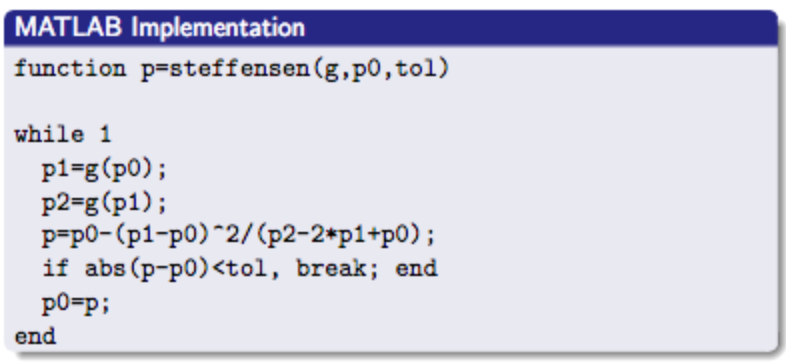Aitken’s \(\Delta^2\) Method
-
What?

-
Why?
Can be used to accelerate the convergence of a sequence that is linearly convergent, regardless of its origin or application. -
Del [Forward Difference]:

-
\(\hat{p}_n\) [Formula]:

-
Generating the Sequence [Formula]:

Steffensen’s Method
-
- What?:
- By applying a modification of Aitken’s \(\Delta^2\) method to a linearly convergent
sequence obtained from fixed-point iteration, we can accelerate the convergence to quadratic.
-
Zeros and their Multiplicity:

- Difference from Aitken’s method:
- Aitken’s method: Constructs the terms in order

- Steffensen’s method: constructs the same
first four terms, \(p_0, p_1, p_2,\) and \(\hat{p}_0\). However, at this step we assume that \(\hat{p}_0\) is a better
approximation to \(p\) than is \(p_2\) and apply fixed-point iteration to \(\hat{p}_0\) instead of \(p_2\)

Notice
Every third term of the Steffensen sequence is generated by Eq. (2.15);
the others use fixed-point iteration on the previous term. - Aitken’s method: Constructs the terms in order
-
Algorithm:

-
Convergance of Steffensen’s Method:

Steffensen’s Method gives quadratic convergence without evaluating a derivative.
- MatLab Implementation:
